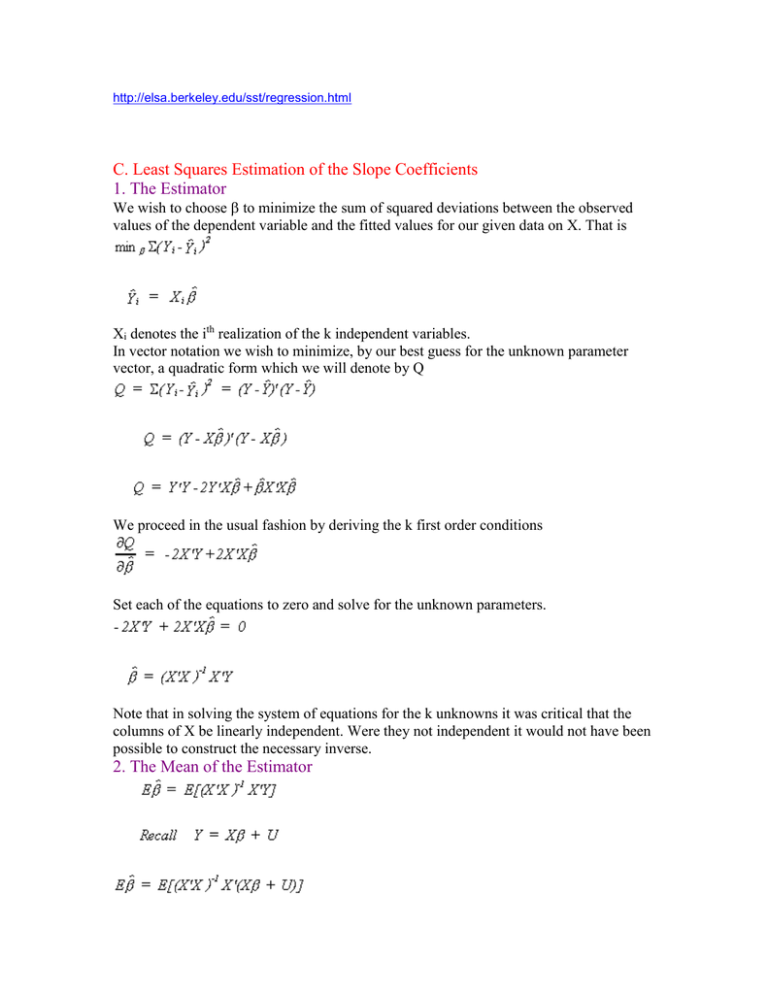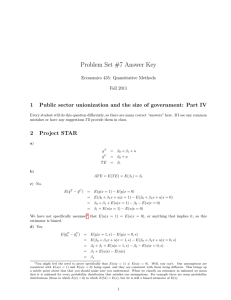C. Least Squares Estimation of the Slope Coefficients 1. The Estimator
advertisement

http://elsa.berkeley.edu/sst/regression.html C. Least Squares Estimation of the Slope Coefficients 1. The Estimator We wish to choose to minimize the sum of squared deviations between the observed values of the dependent variable and the fitted values for our given data on X. That is Xi denotes the ith realization of the k independent variables. In vector notation we wish to minimize, by our best guess for the unknown parameter vector, a quadratic form which we will denote by Q We proceed in the usual fashion by deriving the k first order conditions Set each of the equations to zero and solve for the unknown parameters. Note that in solving the system of equations for the k unknowns it was critical that the columns of X be linearly independent. Were they not independent it would not have been possible to construct the necessary inverse. 2. The Mean of the Estimator We should note several things: Expectation is a linear operator. The error term is assumed to have a mean of zero. X'X cancels with its inverse. Initially we assumed that X is non-stochastic. So The least squares estimator is linear in Y, and by substitution it is linear in the error term. It is also unbiased. 3. The Variance of the Estimator Our starting point is the definition of the variance of any random variable. Substituting in from the expression for the mean of the parameter vector Again, since the X are non-stochastic and expectation is a linear operator we can cut right to the heart 4. The Gauss Markov Theorem We now come to one of the simpler and more important theorems in econometrics. The Gauss-Markov Theorem states that in the class of linear unbiased estimators the OLS estimator is efficient. By efficient we mean that estimator with the smallest variance in its class. Theorem If (X) = k where X: nxk, E(U) = 0 and E(UU')=2I then is BLUE. Proof: We seek an estimator * that is a linear unbiased estimator with a smaller variance than the OLS estimator. Let * = C*Y be an arbitrary linear estimator. Since this is a linear estimator and OLS is a linear estimator we can choose C* to be a combination of the design matrix. Namely, C* = C + (X'X)-1X'. As before Y = X + U. For * to be unbiased we must impose the restriction that CX = 0. Now from the definition of variance and using the fact that our new estimator is unbiased we have Var(*) = E(* - )(* - )'. Or, substituting in for * But we already know CX = X'C' = 0 so *) Var()








